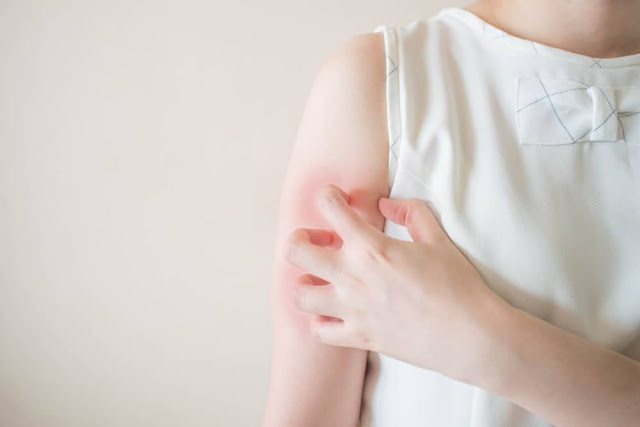What Type of Disease is HIV
Human Immunodeficiency Virus or HIV is a type of infectious disease caused by a virus and can cause AIDS. This virus attacks humans and attacks the body's immune system (immunity), so the body becomes weak in fighting infections. Without treatment, a person with HIV can survive for 9-11 years after being infected, depending on the type. In other words, the presence of this virus in the body will cause a deficiency (deficiency) of the immune system. Distribution of the HIV virus can be through the distribution of Semen (reproduction), Blood, vaginal fluids, and breast milk. HIV works by killing important cells needed by humans, one of which is helper T cells, macrophages, dendritic cells.
In 1983, Jean Claude Chermann and Françoise Barré-Sinoussi from France succeeded in isolating HIV for the first time from a sufferer of lymphadenopathy syndrome. At first, the virus was called ALV (lymphadenopathy-associated virus). Together with Luc Montagnier, they proved that the virus was the cause of AIDS. In early 1984, Robert Gallo from the United States also examined the AIDS-causing virus called HTLV-III. After further investigation, it was proven that ALV and HTLV-III were the same virus and in 1986, the term used to refer to the virus was HIV, or more specifically called HIV-1.
Shortly after HIV-1 was discovered, a new subtype was found in Portugal from patients from West Africa and later called HIV-2. Through cloning and analysis of sequences (genetic makeup), HIV-2 has a difference of 55% of HIV-1 and is antigenically different. The other biggest difference between the two strains (strains) of the virus lies in the envelope glycoprotein. Further research estimates that HIV-2 originates from SIV (retroviruses that infect primates) because of the similarity of sequences and cross reactions between antibodies to the two types of virus.
The two HIV species that infect humans (HIV-1 and -2) originally came from west and central Africa, moving from primates to humans in a process known as zoonosis. HIV-1 is the result of an evolution of the simian immunodeficiency virus (SIVcpz) found in the chimpanzee subspecies, Pan troglodyte troglodyte. Whereas, HIV-2 is a virus species produced by a different strain of SIV (SIVsmm), found in Sooty mangabey, the old world monkey of Guinea-Bissau. Most HIV infections in the world are caused by HIV-1 because these virus species are more virulent and more infectious than HIV-2. Meanwhile, HIV-2 is mostly still confined in West Africa.
Based on its genetic makeup, HIV-1 is divided into three main groups, namely M, N, and O. The HIV-1 M group consists of 16 different subtypes. While in groups N and O it is not yet clear the number of virus subtypes incorporated in it. However, both groups had kinship with SIV from chimpanzees. HIV-2 has 8 types of subtypes that are thought to originate from different Sooty mangabey.
If some HIV viruses with different subtypes infect the same individual, circulating recombinant forms (CRF) will occur. Parts of the genome of several different HIV subtypes will combine and form a new whole genome. The first recombinant form was recombinant AG from central and western Africa, then recombinant AGI from Greece and Cyprus, then recombinant AB from Russia and AE from southeast Asia. Of all HIV infections that occur in the world, as many as 47% of cases are caused by subtype C, 27% are CRF02_AG, 12.3% are subtype B, 5.3% are subtypes D and 3.2% are CRF AE, while the rest come from subtypes and CRF other.
"Situs ini dibuat dengan tujuan untuk membantu orang lain baik yang sedang menjual atau pun mencari rumah di Jepara dan sekitarnya seperti Demak, Kudus, Pati dan Semarang dan sekitarnya adapun data yang ada berasal dari group jual beli rumah seperti facebook, whatsapp atau yang lain. Harapan kami situs ini bisa menjadi sumber informasi yang bermanfaat" Rumah bukan hanya sekedar tempat untuk berteduh, rumah tempat kita berkumpul dengan keluarga yang kita cintai, tempat kita berbagi kebahagiaan dengan mereka. Oleh karena itu sebelum anda memutuskan untuk membeli sebuah rumah selain lokasi yang strategis, harga yang pas dengan keuangan anda, keamanan dan kenyamanan lingkungan rumah yang akan anda beli anda harus membicarakannya terlebih dahulu kepada keluarga anda. Dan jangan lupa untuk mencari informasi tips membeli rumah atau perumahan yang aman. "
BAGIKAN ARTIKEL INI KE TEMAN ATAU SAUDARA ANDA













